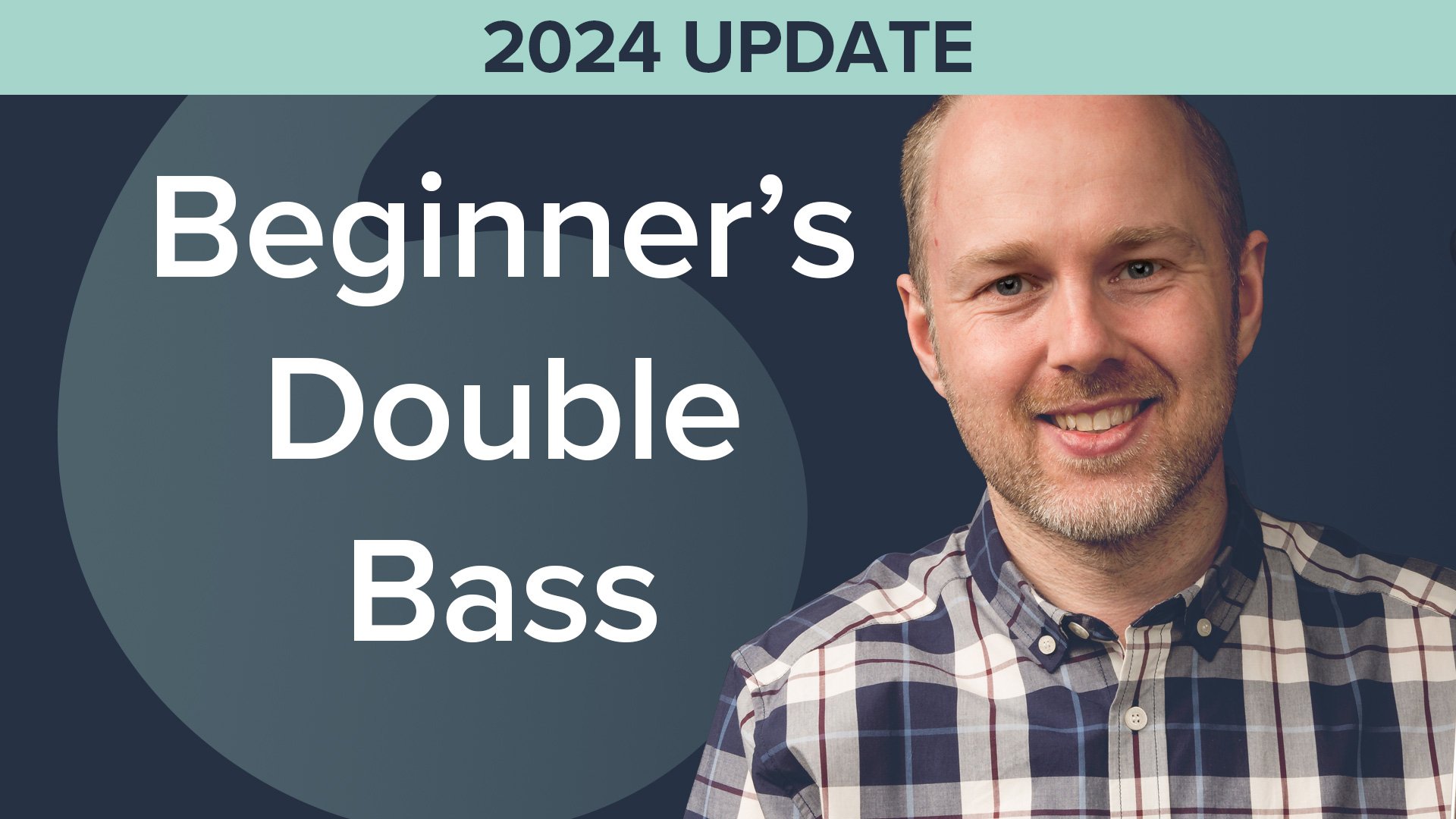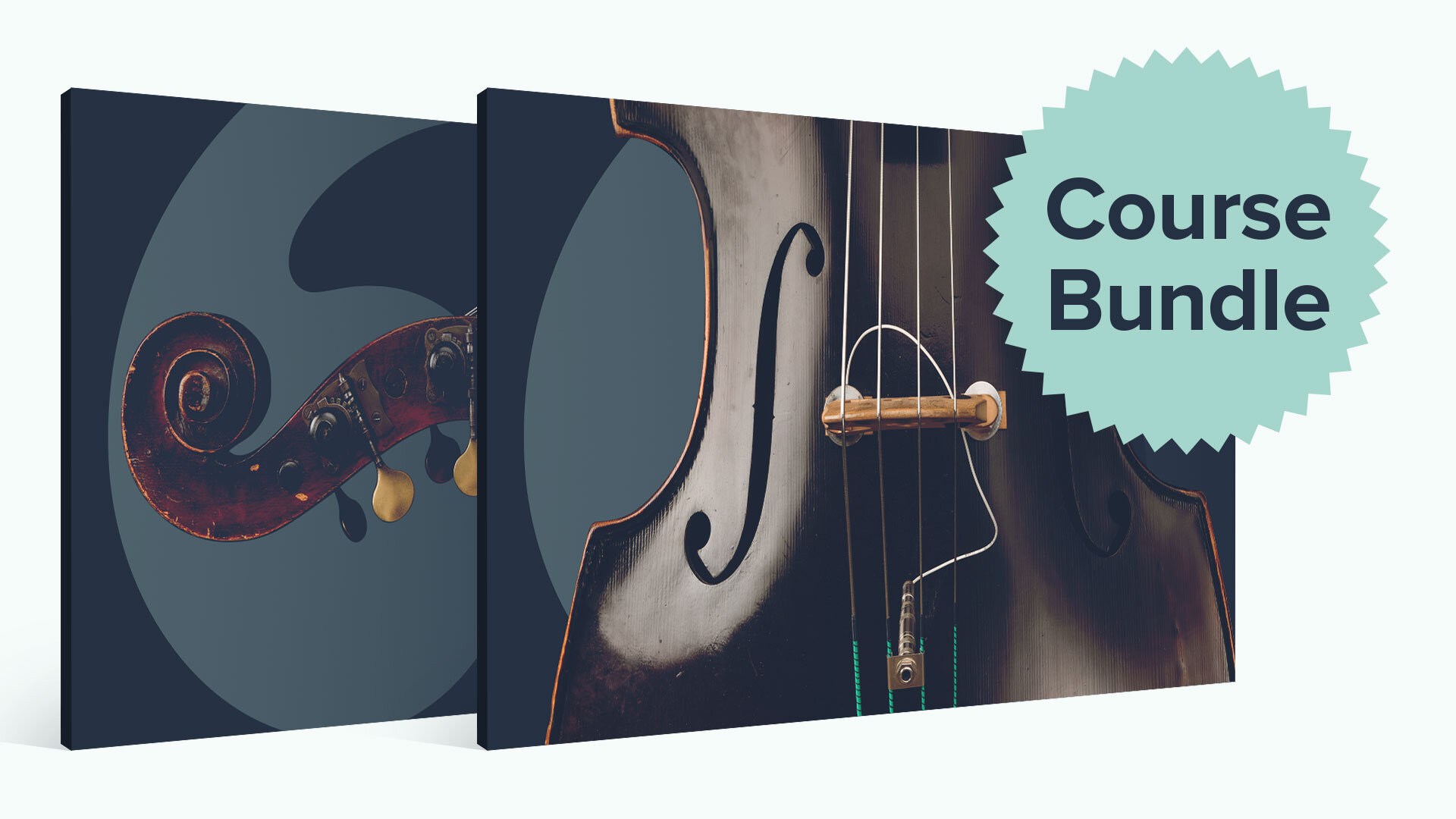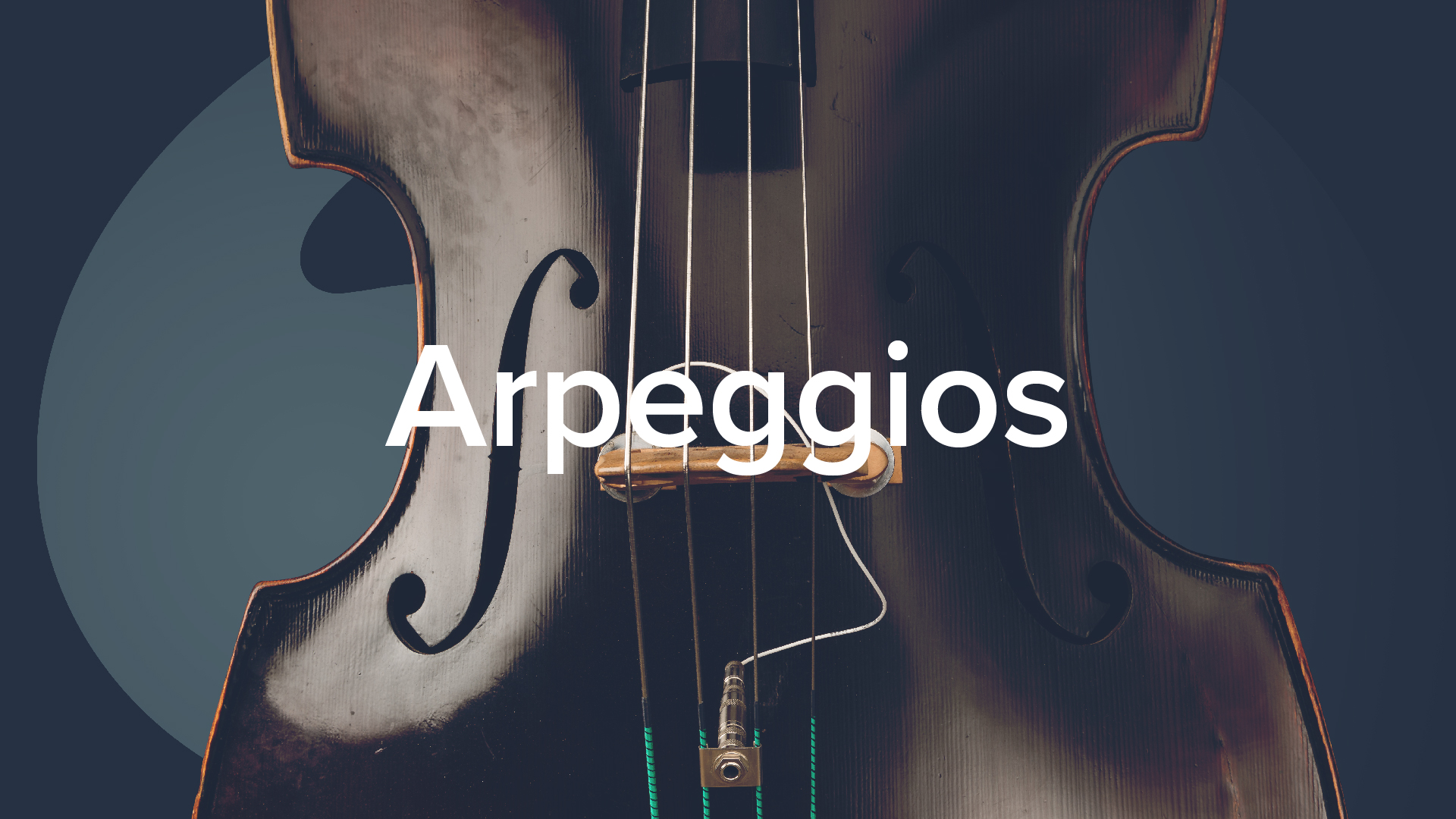Use this double bass strings buyers guide to find your perfect set!
“Double bass strings have a huge effect on the playability and tone of your instrument. Finding the set which allows you to play your best music is essential.”
I’m often asked which strings I use and which I recommend. This is a challenge, as double bass strings sound and perform differently on different instruments. Some strings simply don’t suit a particular double bass, and there’s no shortcut to discovering this without trying them. This said, I’ve provided a few ideas to guide your quest for the perfect tone.
Consider the style of music you’re playing. Will you be playing in a band? Will that band be loud? Orchestral strings should sound superb when played with a bow and can also sound very good when played pizzicato, but they are less likely to amplify as well as jazz strings. I’ve found this to be true with one of my favorite orchestral strings: Thomastik Belcanto. They sound amazing with the bow and have a decent pizzicato sound, but when I use them with an amplifier, the pizzicato sound is less successful. They are too dark and I struggle hearing myself.
Find the right strings for your bass. I’ve found that a dark sounding instrument may suit a bright string such as Thomastik Spirocore. This works both ways and a bright sounding bass may benefit from a dark string such as the Pirastro Evah Pirazzi.
Consider mixing strings. Many bassists use a Thomastik Spirocore E string to add extra growl and clarity in the lower register. On some sets, the G string can sound too thin and is replaced with a darker sounding, or heavier gauge, such as a gut string. It may be possible to tweak your tone by mixing strings. The down side is that you can overthink this and end up with a set that doesn’t blend.
Test the strings on the bandstand. Some strings sound great in the practice room, but not on a gig. This can be particularly problematic for jazz bassists, as you need to hear how compatible they are with your amplification.
Find the right string gauge for you. In my experience, string gauge is less of an issue when practicing, but in the heat of battle on a gig, it may be critical. I prefer lighter gauge strings, regardless of the brand. Some regular or heavy gauge double bass strings add more “weight” to the sound, but if I’m not comfortable on a long gig, that’s not important.
How do the strings feel? Different brands of strings feel different, and you may find that some sets simply don’t suit you.
Your experiences with strings may be different to other peoples. The player, the strings, the bass, the string height, the pickup and amplifier can all make a difference. The only way to discover what works is to try them.
Play as many instruments as possible to learn how different strings perform. They may belong to friends or the stock of a local instrument dealer. Use the experience to learn what you like and don’t like about the different sets on these instruments.
What strings do I use?
For the majority of the Discover Double Bass video lessons I’ve used Pirastro Evah Pirazzi Weich and they are currently on my bass. However I have also spent time using D’Addario Zyex and Thomastik Spirocore Weich. All of these are superb strings that I’m happy to use. As for which set works best for my needs and on my bass, that’s a hard one to call!
What strings do I recommend?
Because of the variables involved in recommending strings and how expensive new sets are, I don’t want to make specific suggestions. However, here’s a list of strings that I have particularly enjoyed using over the years. I have listed them under three categories, which reflect the style of music for which they are typically used: jazz, orchestra and hybrid.
Jazz Double Bass Strings
Thomastik “Spirocore Weich”
This is a classic set of double bass strings loved by many jazz bassists. Their arco response requires care to avoid squeaks, and they are harder to bow than an “orchestra” set, but it’s a superb string, which I think sounds better with age. If you want a jazz tone with lots of growl and character, they are well worth considering. For more information check out my video, Thomastik Spirocore Weich Review.
Orchestra Strings
Thomastik “Belcanto”
I did my postgraduate classical recital using Belcanto strings. Their arco response is a joy and they are very playable, perhaps the most playable orchestra string I’ve tried.
They have a reasonable pizzicato response, but don’t work as well amplified. If you are playing predominantly arco, I strongly recommend this string.
Pirastro “Original Flat-Chrome”
Pirastro Original Flat-Chrome strings are superb and one of my favorite sets. I couldn’t choose between these and Belcanto as they are both wonderful strings. The Original Flat-Chrome strings have a rich, complex sound, are easy to play and provide excellent arco response.
D’Addario “Kaplan”
I’ve got a medium set of these strings and love them. They have a wonderful tone and response and are a very well balanced set of strings. I have several colleagues who have been using the heavy gauge set and are getting great results.
Hybrid Strings
Pirastro “Evah Pirazzi Weich”
I love these strings, and I have been using them since they came out in 2009. “Weich” means light gauge and their regular gauge set is labeled “Orchestra.” I also like the “Orchestra” set, but find the “Weich” have a touch more pizzicato growl and are more playable. Click here for my Pirastro Evah Pirazzi Weich string review video.
D’Addario “Zyex Light”
These are my current favorite D’Addario string and a superb hybrid set. They are a touch brighter than Pirastro Evah Pirazzi, but not as bright as Thomastik Spirocore. It is often easier to hear the pitch with brighter strings. If you want to see my string review video click here.
Pirastro “Oliv”
This string has a gut core with a chrome steel wrap. I’ve only tried the G string from the Oliv set and loved it. The downside is that gut strings have less stable tuning than steel or synthetic core strings, but Oliv do stay in tune a lot better than most gut strings. The tone is superb and it’s very playable. . Click here to see my video review of the Oliv G string.
For new bassists, I don’t recommend mixing sets, but if you are looking for a gut G string to add some old school mojo to your current set, I suggest this one.
There are other excellent double bass strings, such as Pirastro “Permanent,” “Eudoxa,” “Evah Pirazzi Slap,” “Obligato,” Thomastik “Dominant,” Gerold Genssler, “Sonores” and many more.
Lastly, if you do decide to change your strings please check out my video to make sure you’re doing it the right way. “How to Change the Strings on a Double Bass”.
I hope this article helps you find the set of strings that are the best fit for you and your bass. If you have any feedback, please join the conversation in the comments section below.
Geoff Chalmers















